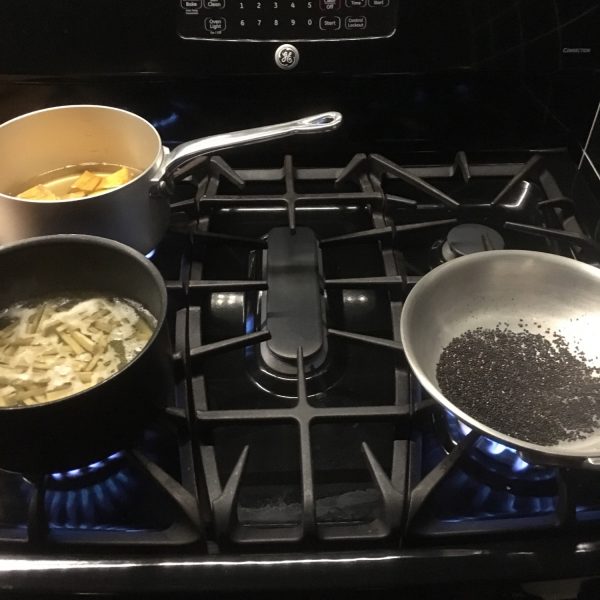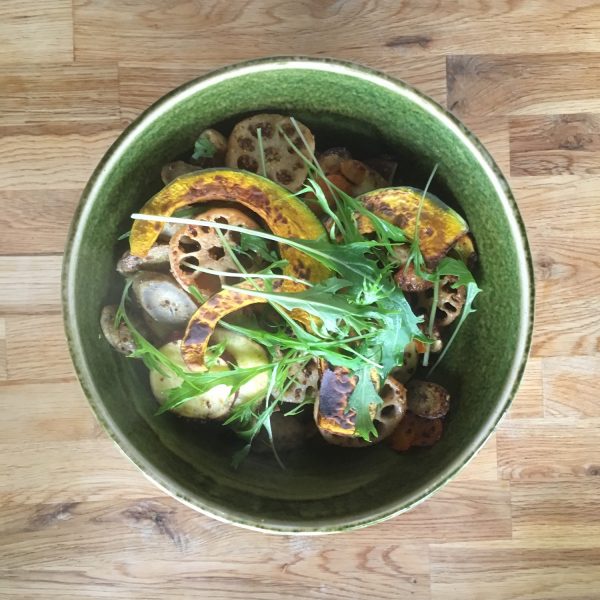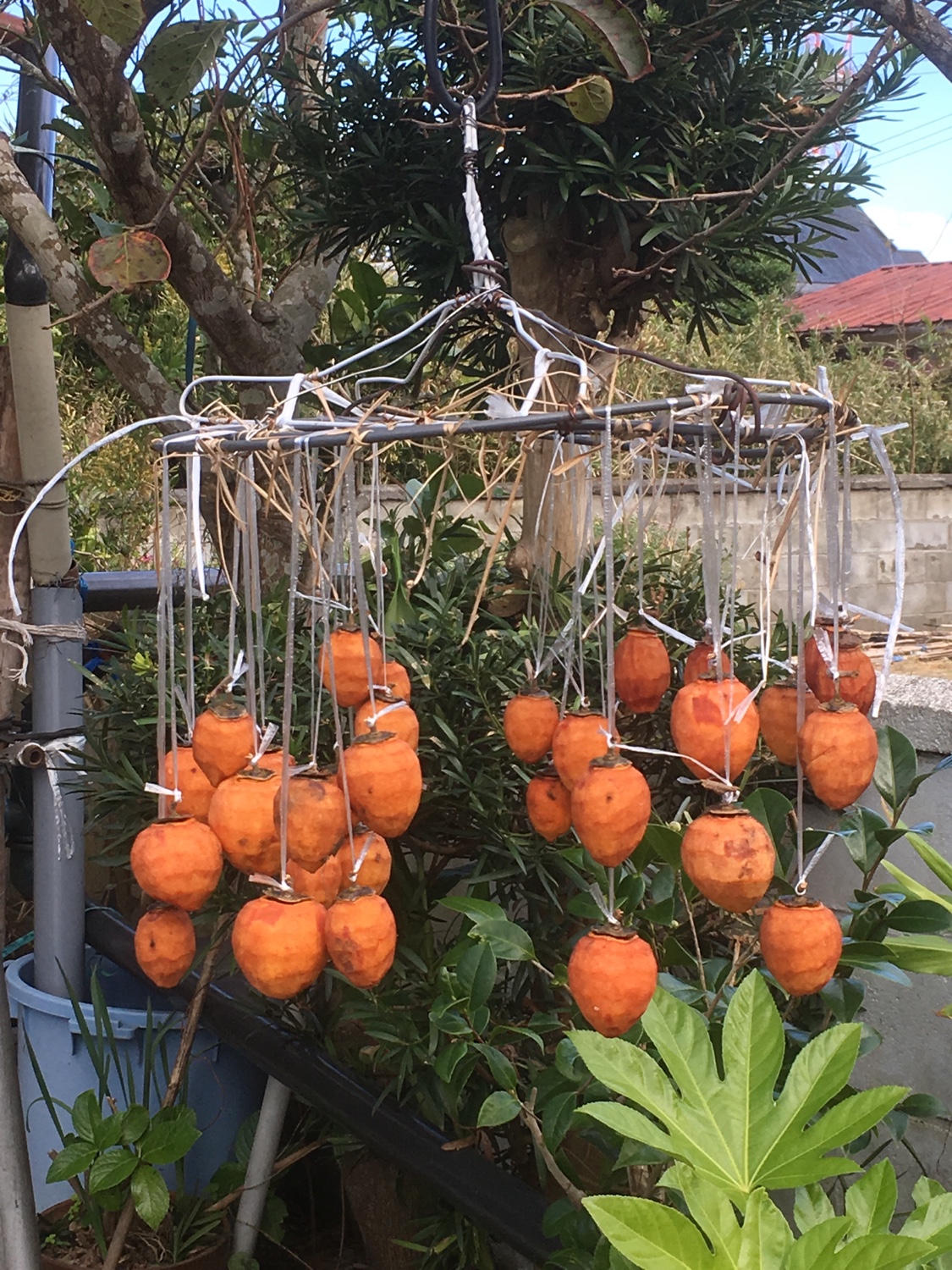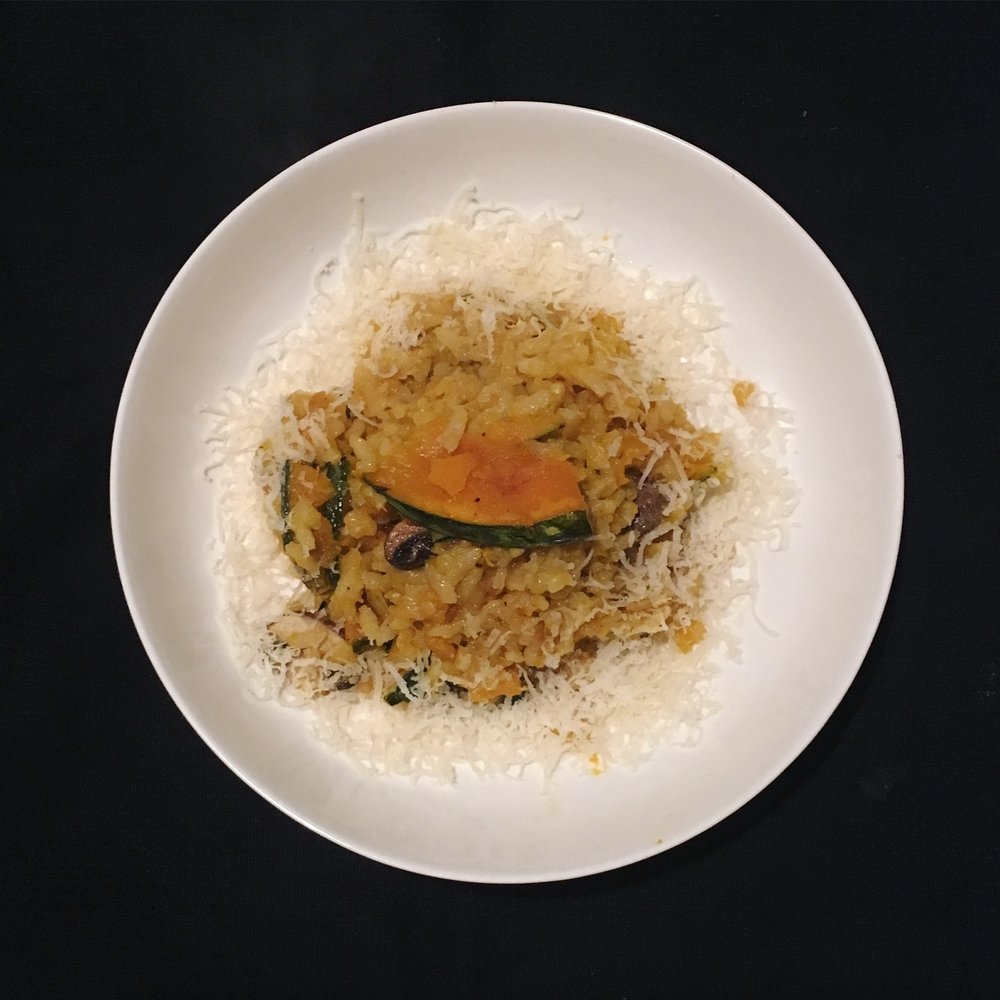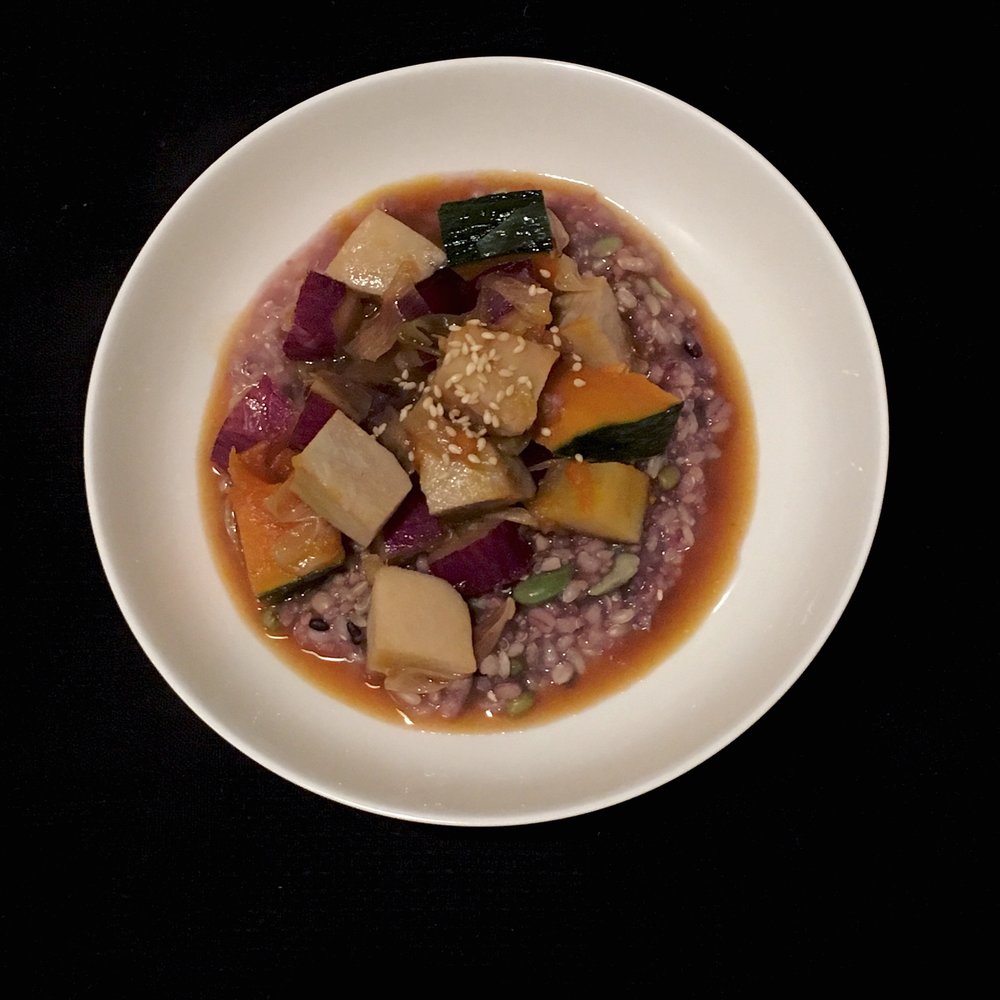As I was questioning myself about Buddhist cuisine in China regarding these Chinese beancurd noodles, I decided to do a bit of search and reopen my Shojin cuisine book. I was right, until the 18th century in China buddhist and taoist temples would only serve vegetables soup and tea to pilgrims, the same thing monks were eating. Only it started to be a more elaborated and widespread cuisine during the Qing dynasty (late 17th to 20th century). In japan shojin cuisine was of course imported from China together with Zen by Dogen during the Kamakura period in the 12th-13th century. All the basic about Shojin cuisine were actually written in the 典座教訓 (Tenzo Kyokun) itself inspired by Chinese writings. It has evolved regularly from the early 17th century during Edo period to become shat it is now. Next time I go to China I’ll try to eat in a temple and try local buddhist or taoist cuisine for sure!
But back to my kitchen I decided as I said to reopen my Shojin cuisine book from the Sanko-in past abbess. I always have a lot of pleasure opening a cookbook I haven’t opened for a while and this one is no exception. One thing I love with that book is that it actually tell not only how to cook but also how and how long you can keep the food you have prepared, something that I find extremely useful. Browsing the book, I found plenty of autumn recipes I wanted to try and luckily I had all the ingredients needed to proceed. I tried two recipes one of kabocha and one of burdock. Both extremely simple. And I was very happy with the result, being back in my kitchen and preparing delicious locally grown vegetables. Here are the two recipes, not the way they were in the book but the way I actually cooked.
Burdock:
– 1/2 burdock
– 3tbs of sake
– 3tbs of soya sauce
Wash and cut the burdock in 4cm long sticks. Cut each piece in the length in 4 to 10 depending on the diameter.
Place in a small pan with water and boil 10min. Drain and the in a little pan add the sake and soya sauce and simmer for 20min at low very heat under cover. Eat warm or cold. Keeps one month refrigerated according to the book but it was so good we ate everything at once!!!!
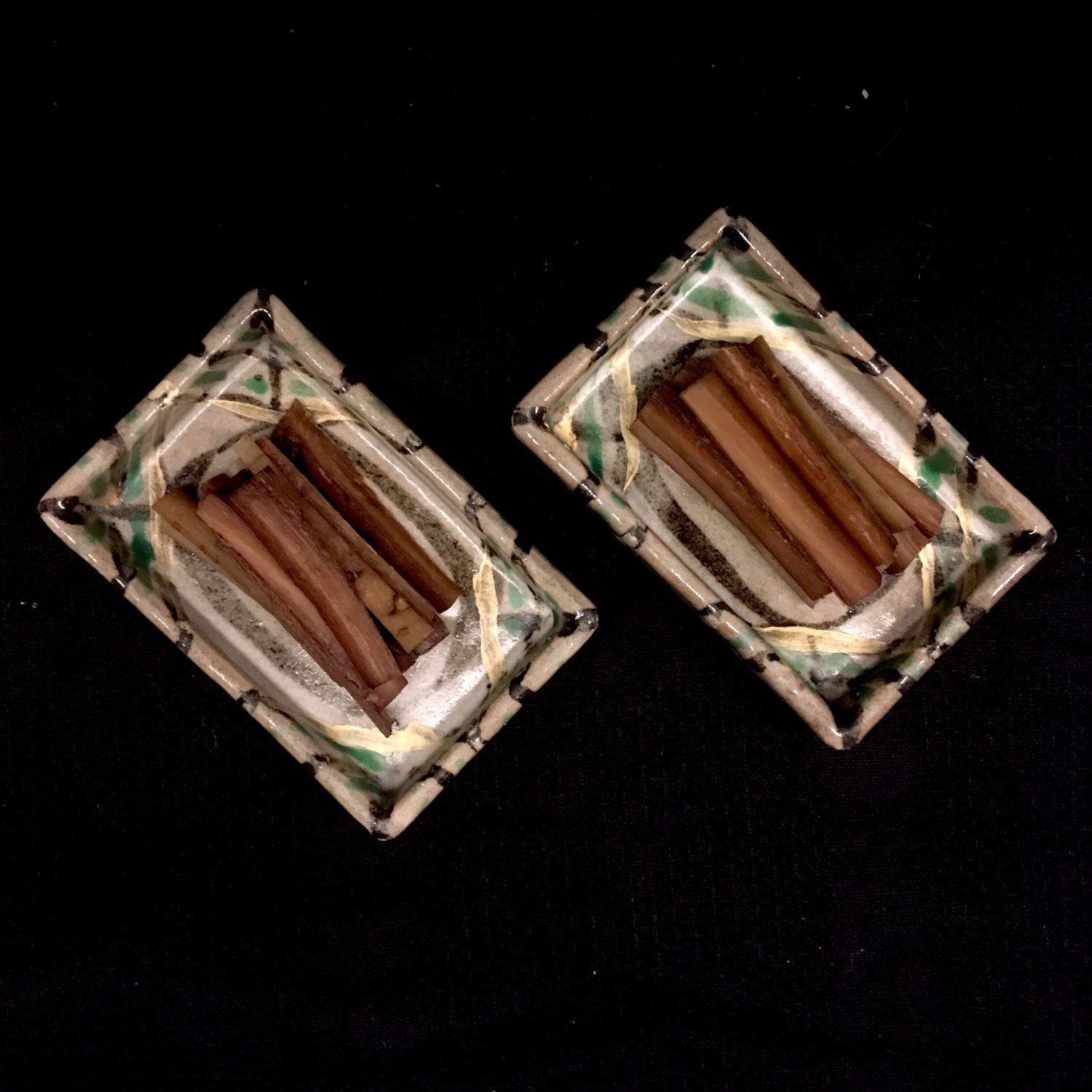
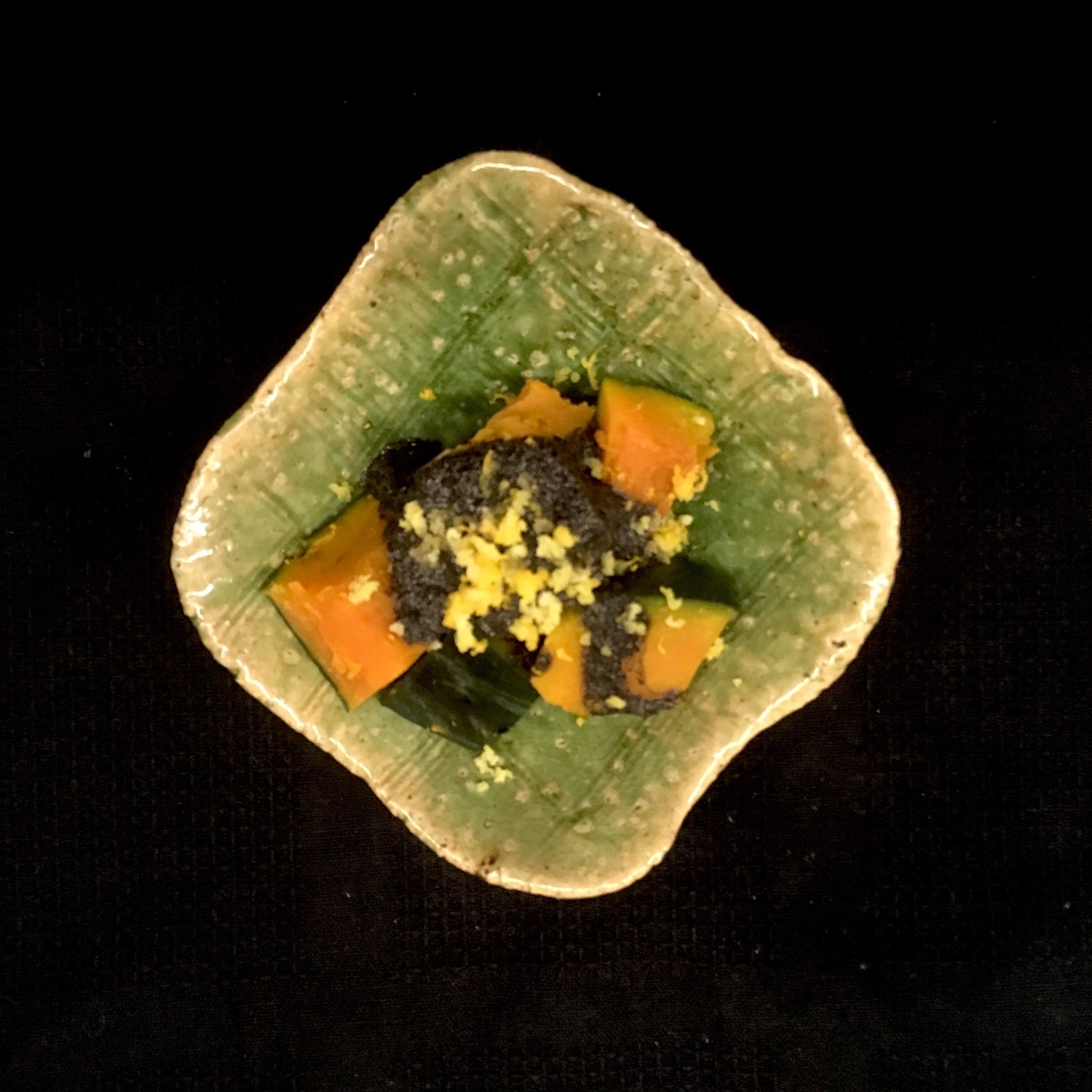
Kabocha with black sesame and yuzu:
– 1/4 of kabocha
– 4tbs of black sesame
– 1/2cup of sake
– 3tbs of brown sugar
– grated yuzu peel
– pinch of salt
Cut the kabocha in bites keeping the skin of course. In a pan put the kabocha and cover with water. Add the sake, and sugar and bring to a boil, cook until kabocha is soft but not mushy. Grill the sesame in a pan and grind finely in a suri bowl. Add 2tbs of the cooking broth of the kabocha, add the salt. Remove the kabocha from the broth, set in a plate, add the sesame mix and finish with grated yuzu peel.
